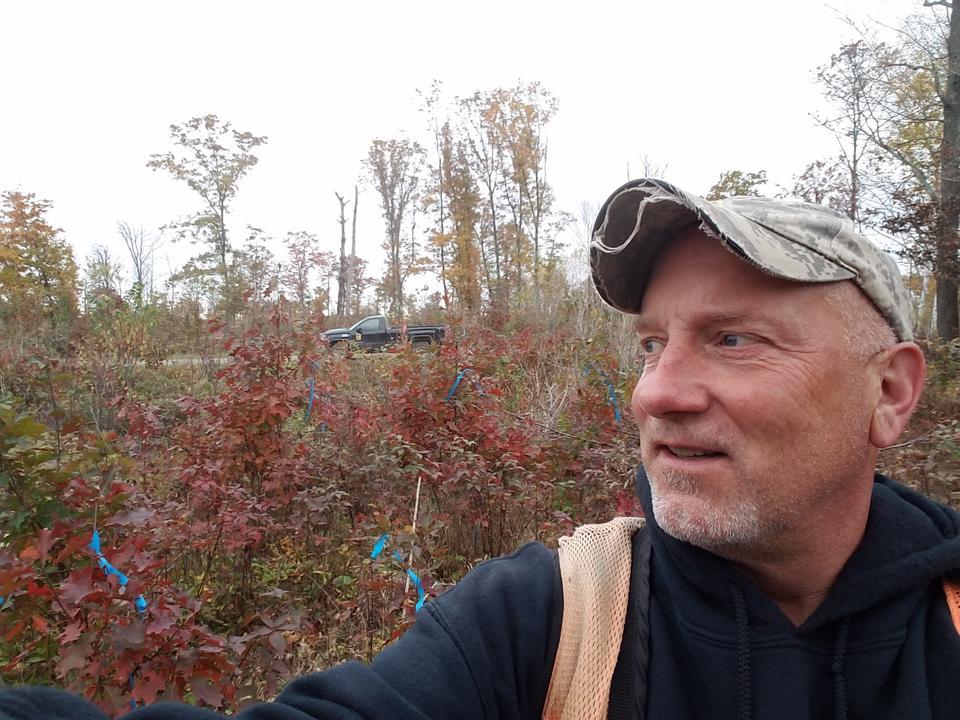Overview
The main objective of this case study is to assess and document the effectiveness of brush saw release work that has been completed on approximately 600 acres of oak regeneration, on sixteen sites in the St. Croix State Forest. All sites were originally hardwood stands (mostly oak and aspen) impacted by a severe blowdown event in 2011. Natural oak regeneration at varying levels became established after the blowdown and subsequent salvage harvests.
After the 2011 blowdown event, a procedure was established to assess need and operability for salvage harvests.
- Aerial photos were taken on the area impacted by the storm
- Stands found to have over 25% blowdown through photo interpretation were scheduled for field examination by a forester
- Salvage harvests were set up and offered for sale on stands judged to have sufficient volume and operability
After salvage harvests, for all non-aspen hardwood stands, ocular regeneration surveys and silvicultural assessments were conducted (See Figure 6). The main purpose of these surveys was to determine the amount, size, and condition of oak regeneration, as well as to determine whether a competition release was needed.
Crop tree release was scheduled for stands where surveys showed adequate amounts of oak regeneration that would benefit from vegetative competition release. Adequacy of oak regeneration was a judgement call of each forester as they did the surveys.
Mechanical release work with brush saws was completed on all 16 study sites in 2017 and 2018 to control vegetative competition around existing oak seedlings/saplings. The goal was to increase recruitment success of oak seedlings/saplings into larger size classes so it is a co-dominant/dominant species in the next mature stand.
To aid in the 2021 assessment, customized regeneration surveys (see Figure 7) have been completed. Oak regeneration was tallied by:
- Two height classes (0-4 feet and greater than 4 feet)
- Origin type (acorn or stump sprout origin)
- Number of seedlings that are “Free to Grow”
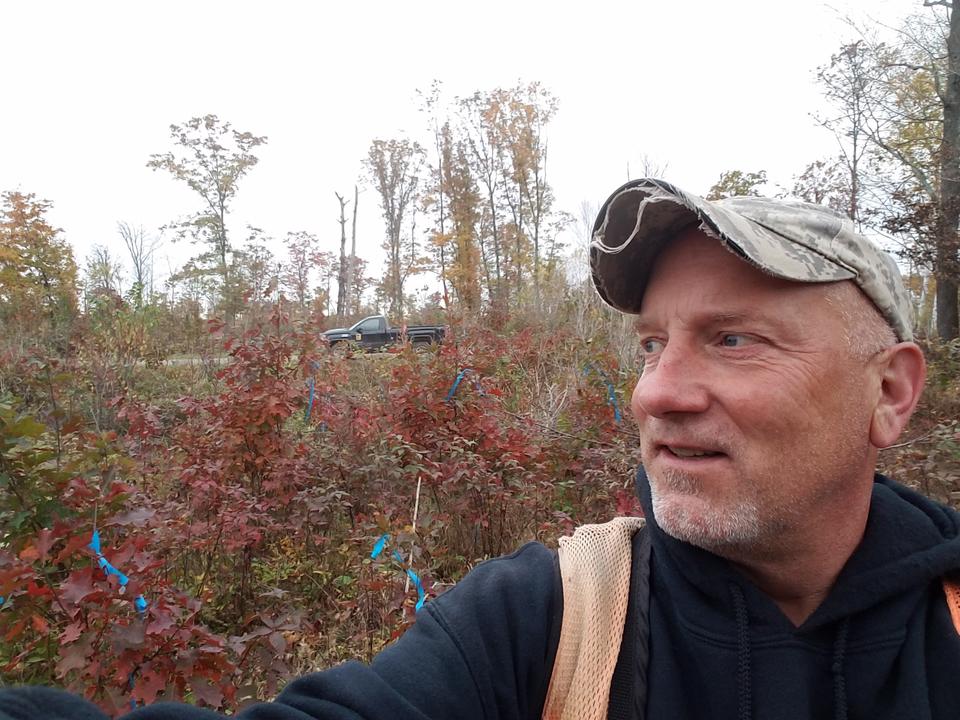
Figure 1: Retired DNR forester Doug Hecker shows released oak seedlings.
Silviculture Objective(s)
- Increase recruitment success of oak seedlings/saplings into larger size classes to ensure the species is a co-dominant/dominant species in the next mature stand.
- Evaluate the effectiveness of brush saw mechanical release to increase recruitment of natural oak regeneration into larger size classes.
- Establish baseline data for continued assessment of these sites in the future.
- Maintain and improve wildlife habitat with a strong component of oak trees in the new stand. One of oak stands’ most important contributions to wildlife is mast, or acorns which are an important seasonal food source for squirrels, turkey, deer, grouse, blue jays and other acorn consumers. Oak forests provide habitat for numerous wildlife species. The principal game species include white-tailed deer, turkey, gray squirrels, and in some areas ruffed grouse. Other important species include raccoon, opossum, red fox, bobcat, skunk, and a host of birds. Source: North Central Manager’s Handbook for Oaks in the North Central States (GTR NC-37).
- Increase hardwood species diversity and resilience. Ensuring that oak is a major component of future stands will increase hardwood species diversity. One result of the increased diversity will be greater resilience to various future forest health threats, including climate change.
- Improve timber quality and value. A good component of healthy, well-formed oaks will help ensure high timber value at harvest time.
Pre-treatment stand description and condition
Stand establishment and management history:
All study stands were hardwood forest types (mostly oak and aspen) that were impacted to varying degrees by a major blowdown event in the summer of 2011 and a salvage harvest in years 2011 to 2014.
Pre-treatment species composition:
As shown in Figure 3, we could only find pre-brush saw release regeneration surveys for 10 of the 16 study sites. The 10 sites with pre-treatment data averaged about 750 red oak and 410 sugar maple stems per acre. Some of the sites also had bigtooth aspen, paper birch and basswood crop trees present. Species competing with crop trees consisted mostly of trembling aspen, red maple, ironwood and hazel.
We can reasonably assume that the 6 sites where we could not find pre-treatment data had similar amounts of crop trees and competition. We know for sure that all of 16 sites had a component of oak regeneration because that is why they were targeted for release.
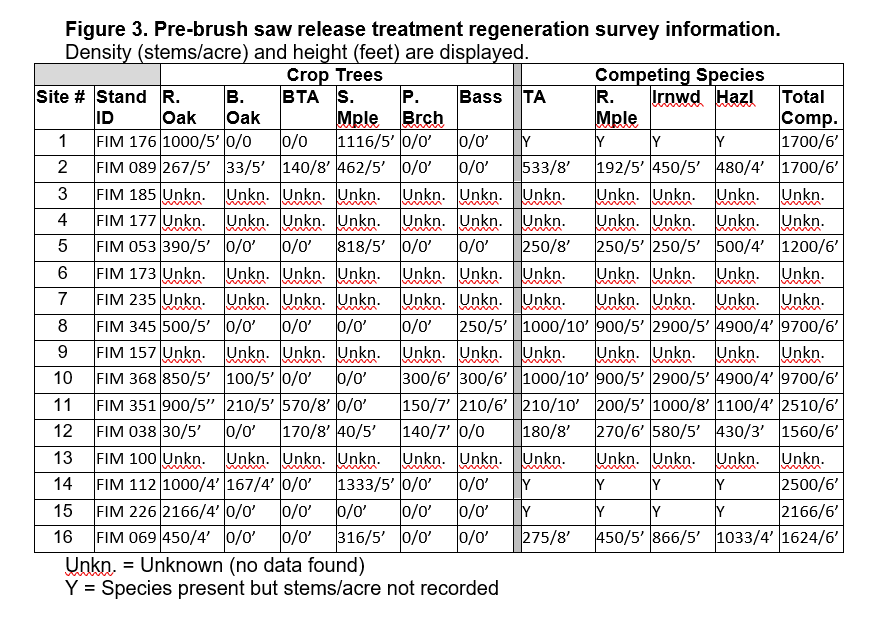
Figure 3: Pre-brush saw release treatment regeneration survey information.
Pre-treatment growth and stocking:
See Figure 3.
Pre-treatment forest health issues:
The 2011 blowdown event was a major factor impacting condition of the stands in the study.
Landowner objectives/situation:
While specific objectives vary from parcel to parcel, lands under the administration of DNR-Forestry are managed in alignment with Section Forest Resource Management Plans (SFRMP) to ensure that state forest management activities meet statewide goals for ecological protection, timber production, wildlife habitat and cultural/recreational values. The DNR assembles teams from the Divisions of Forestry, Fish & Wildlife, and Ecological & Water Resources who work with partners and the public to develop SFRMPs.
The goal for oak forest acreage at the time of project initiation was to maintain as much of it as possible. Oak was present at varying levels in each stand prior to the 2011 blowdown and subsequent salvage harvests.
Silviculture Prescription
All study stands were hardwood forest types (mostly oak and aspen) that were impacted to varying degrees by a major blowdown event in the summer of 2011 and a salvage harvest in years 2011 to 2014.
The following series of treatments were implemented:
| Treatment | Date | Description | Acres |
| Pre-treatment regeneration surveys | 2016/17 | After the 2011 blowdown event, a procedure was established to assess need and operability for salvage harvests.
After salvage harvests, for all non-aspen hardwood stands, ocular regeneration surveys and silvicultural assessments were conducted (See Figure 4). The main purpose of these surveys was to determine the amount, size, and condition of oak regeneration, as well as to determine whether a competition release was needed. Crop tree release was scheduled for stands where surveys showed adequate amounts of oak regeneration that would benefit from vegetative competition release. Adequacy of oak regeneration was a judgement call of each forester as they did the surveys. | |
| Mechanical (brush saw) release | 2017/18
| Release hardwood crop tree species including red oak, bur oak, sugar maple, paper birch and basswood. The object was to release crop trees found on site by clearing competition 7' around target species.
| 564 |
What actually happened during the treatment
The treatments were accomplished as planned. We want to note that the contractors that did the brush saw release work exceeded expectations at species identification, which was crucial to getting the work done to contract specification.
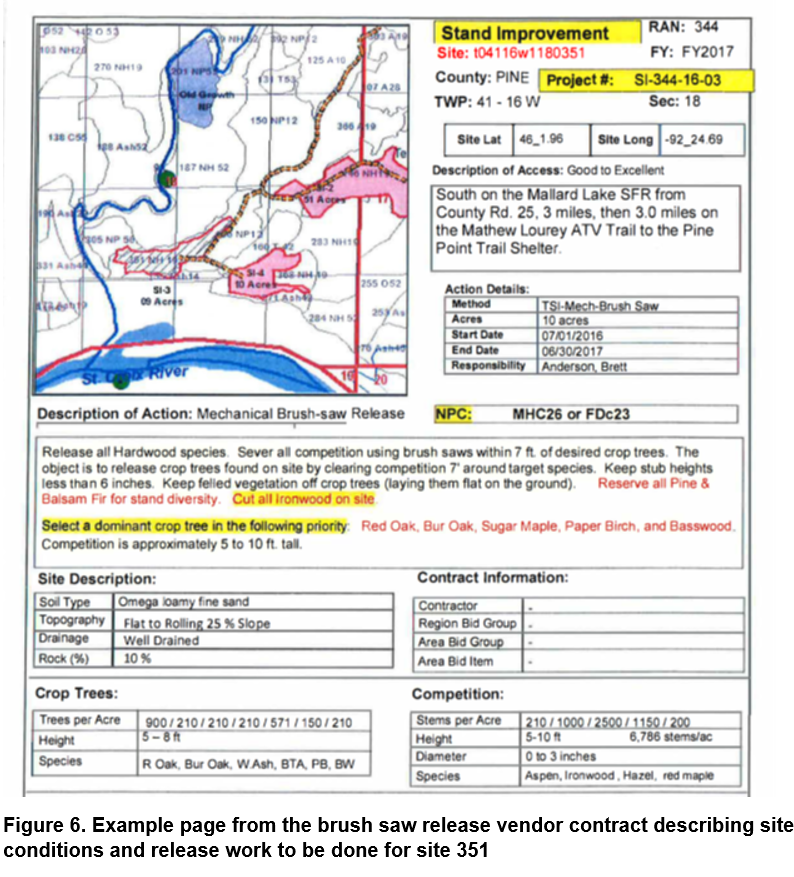
Figure 6: Example page from brush saw release vendor contract describing site conditions and release work to be done for site 351.
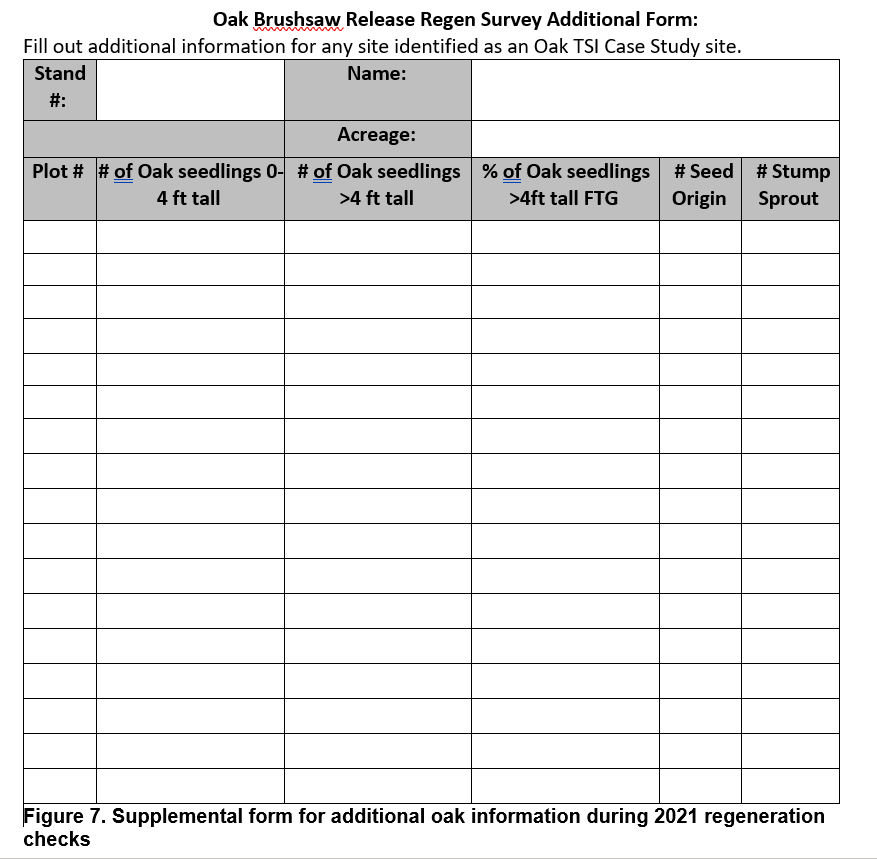
Figure 7: Supplemental form for additional oak information during 2021 regeneration checks.
Post-treatment assessment
The first two silvicultural objectives of the brush saw release project, and our assessment of success in meeting those objectives follows:
Objective 1: Increase recruitment success of oak seedlings/saplings into larger size classes to ensure the species is a co-dominant/dominant species in the next mature stand.
Results:
The study sites cover a total of 5 native plant communities that vary in how easily red oak becomes established, as well as how much silvicultural assistance is needed for oak seedlings to recruit into larger size classes.
Plant communities represented are:
MHc26, Central Dry-Mesic Oak-Aspen Forest:, MHn35, Northern Mesic Hardwood Forest, MHc36, Central Mesic Hardwood Forest (Eastern), MHc47, Central Wet-Mesic Hardwood Forest, FDc25, Central Dry Oak-Aspen (Pine) Woodland.
A brief summary of red oak establishment and recruitment assistance needs characteristics for these communities follows:
- MHc26: Red oak establishes easily and does not need assistance to recruit.
- MHc36: Red oak establishes easily and probably needs silvicultural assistance to recruit.
- MHn35: Red oak establishes easily and definitely needs silvicultural assistance to recruit.
- MHc47: Red oak establishes easily and definitely needs silvicultural assistance to recruit.
- FDc25: Pin oak establishes easily. Red oak does not establish easily. Red oak has difficulty recruiting.
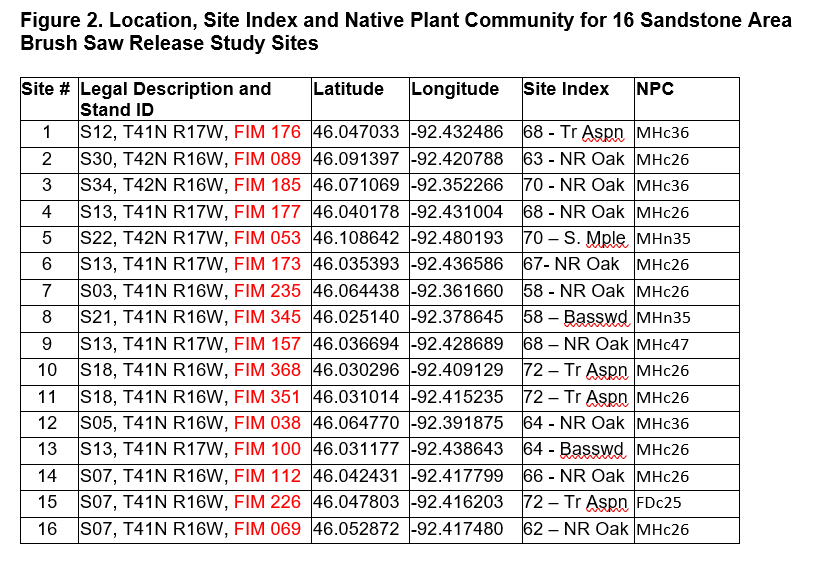
Figure 2: Location, site index, and NPC for 16 study sites
For the stands that were part of MHn35, MHc36, MHc47 and FDc25 communities (see Figure 2), the red oak regeneration that became established post-blowdown and harvest likely would have struggled to recruit into larger size classes without the brush saw release work. Therefore, the release work was crucial to enabling a large oak component to recruit into larger size classes.
MNDNR silvicultural guidance for MHc26 forests indicates that northern red oak can recruit into tree size without silvicultural assistance. However, we need to note that even on the MHc26 sites (see Figure 2), there were clearly a number of stems that were overtopped and would not have reached tree size without the brush saw release. So, while there would have been a decent component of oak in the MHc26 stands without it, the brush saw release did increase the oak component of these sites.
Should they choose to do so, future foresters will have the opportunity over time to influence the composition of almost all study stands, on all represented NPCs, into those classed as oak forest type. The minimum standard to be classed as oak forest type in intermediate to mature growth stage forests is 40% of the total stand volume in oak. Therefore, a minimum of approximately 30 to 40 oak trees averaging 16 to 19 inches DBH are all that are needed in a typical 90-year-old stand to be classed as an oak forest type. Oaks could be the codominant/dominant species, along with a diverse mixture of other species that are a good ecological fit for the sites.
Objective 2: Evaluate the effectiveness of brush saw mechanical release to increase recruitment of natural oak regeneration into larger size classes.
Results:
Since we do not have a “control” area as part of the study, it is not possible to accurately estimate for comparison how many stems of oak regeneration would have recruited into larger size classes without the brush saw treatment. However, we can say that the release work had a positive impact on the number of oak seedlings/saplings that have, and will continue to, recruit into larger size classes. There were clearly a number of stems released from competition that were overtopped and would not have reached tree size without the brush saw release. 15 of the 16 sites have a minimum of 35% stocking with “free-to-grow” oak stems greater than 4 feet in height in 2021. In fact, 13 of the sites have 50% or greater oak stocking (see Figure 5).
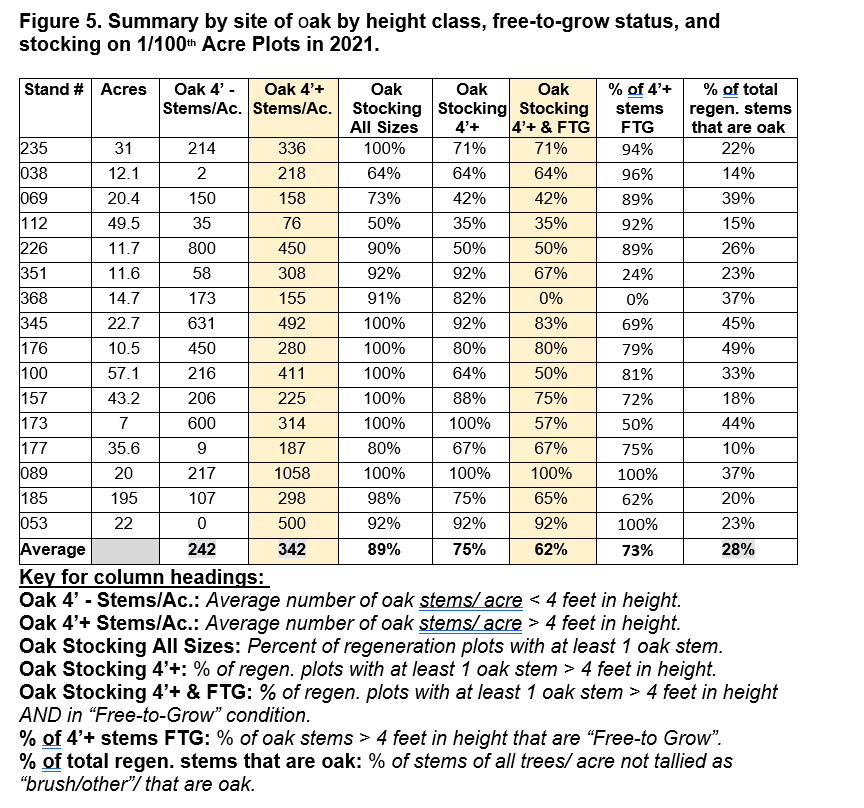
Figure 5: Summary by site of oak by height class, free-to-grow status, and stocking in 2021.
We can say that the treatment was effective at increasing the recruitment of natural oak regeneration into larger size classes. We don’t have the data to analyze the benefit-to-cost to show exactly how effective the treatment was compared to not doing it. We want to note that we intend to continue monitoring these stands into the future. A future study could potentially compare standard forest inventory data for non-treated stands, to data gathered for the study stands.
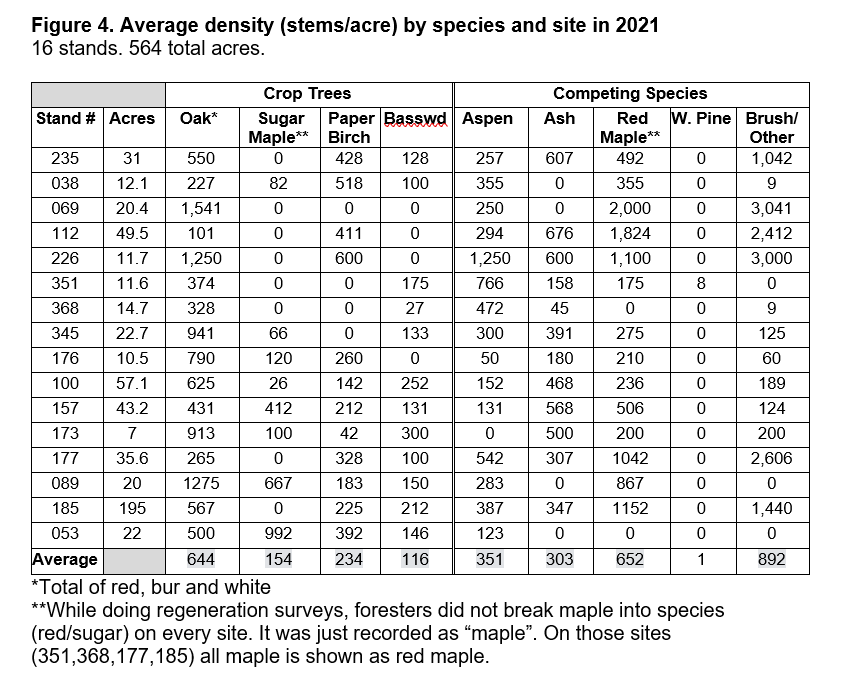
Figure 4: Average density (stems/acre) by species and site in 2021
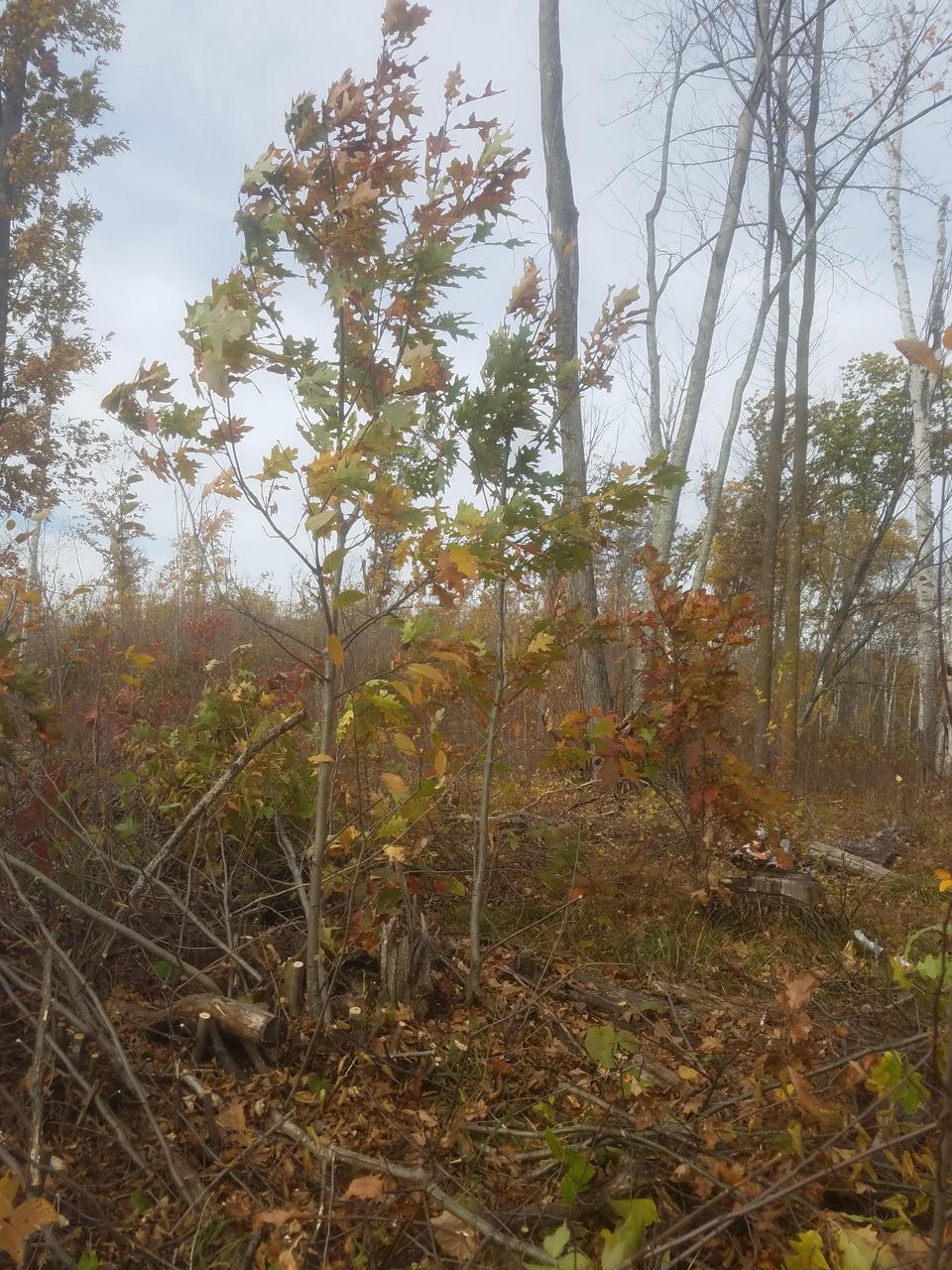
Figure 8: Oak stems mechanically released from competition by brush saw in 2017.
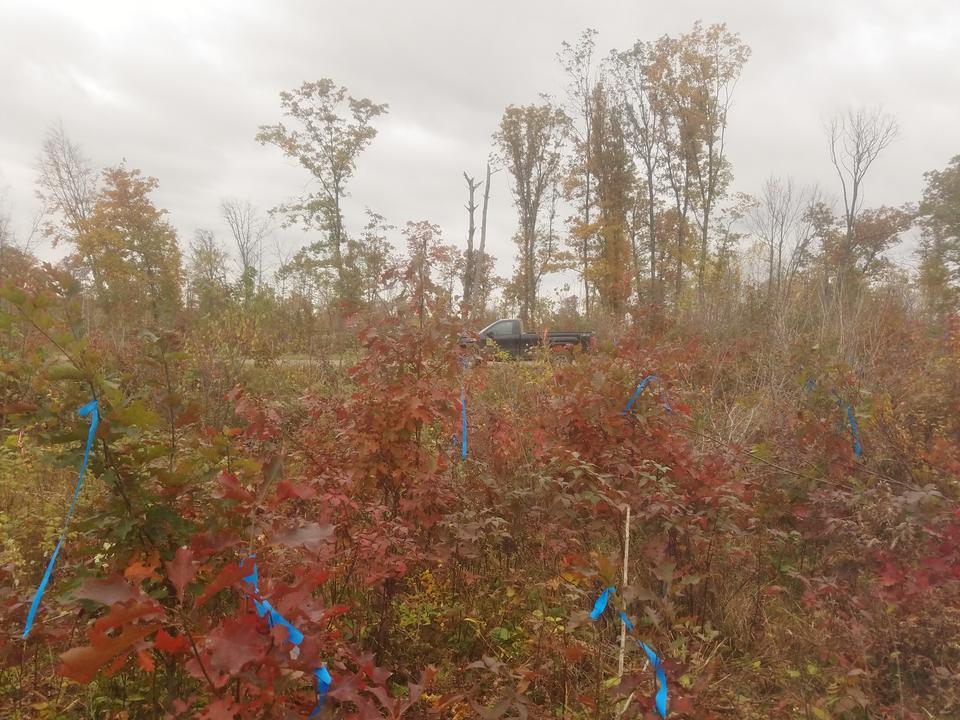
Figure 9: More oak stems after being mechanically released by brush saw in 2017.
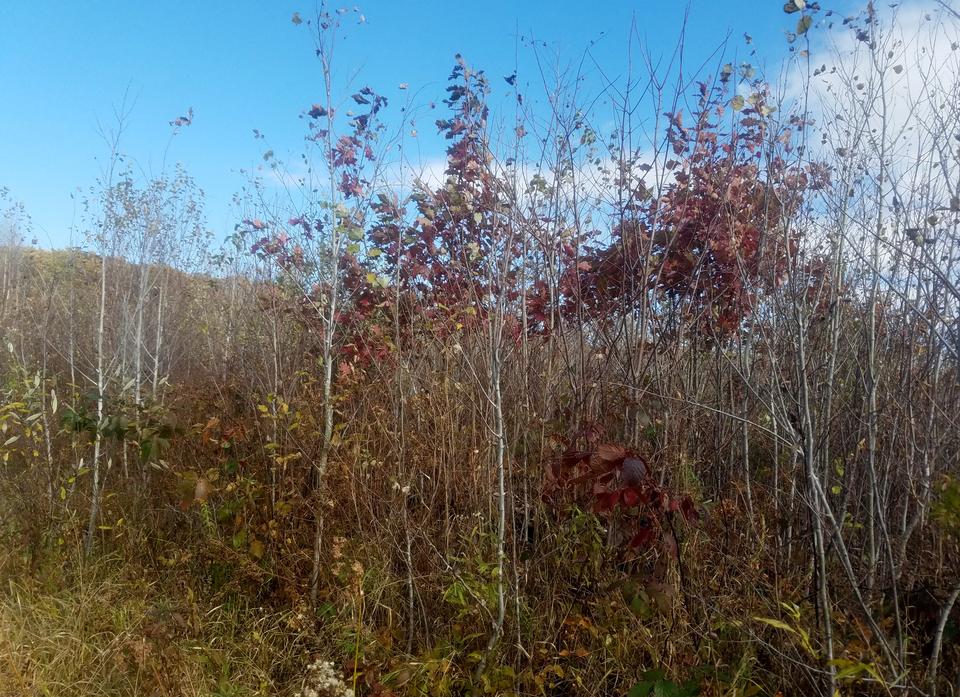
Figure 10: Oak stems among competition prior to being mechanically released.
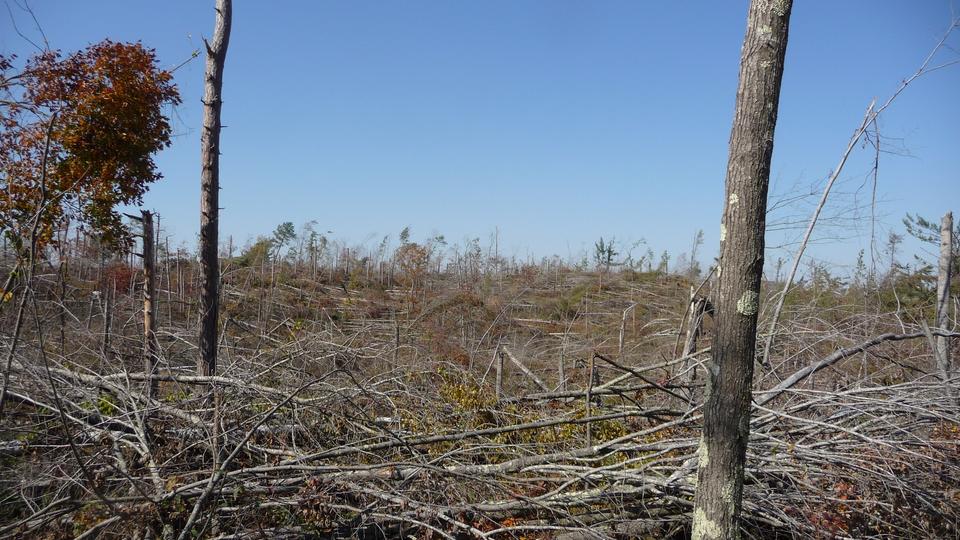
Figure 11: A stand shortly after the windstorm blowdown in 2011.
Plans for future treatments
Where 2021 regeneration surveys indicated a need, there may be some additional brush saw release work done on some of the sites.
Costs and economic considerations
Costs
Mechanical brush saw release: $152/acre
Total: $152/acre
Revenue
No post-brush saw release revenue as of 2021.
Other notes
We gratefully acknowledge the data-gathering assistance of foresters:
- Doug Hecker
- Brett Anderson
- Brian Allshouse
- Michael Palmer
- David Tyler
- Chris Henkel
- Madisson Masucci
- Jeremy Fauskee
- Mike Kobberdahl
- Jake Sivertson
- Brian Strock
We are also grateful for the study review and editing assistance of DNR Silviculture Program Coordinator Mike Reinikainen and Consultant Paul Dubuque.
This case study was developed with support from the United States Department of Agriculture's National Institute for Food and Agriculture, Renewable Resources Extension Act. Project #2021-46401-35956, principal investigator Eli Sagor, University of Minnesota.
Climate Adaptation Considerations
One of the project objectives was to increase hardwood species diversity and resilience. Ensuring that oak is a major component of future stands will increase hardwood species diversity. One result of the increased diversity will be greater resilience to various future forest health threats, including climate change
Summary / lessons learned / additional thoughts
The prescription objective for brush saw release of oaks was not to develop pure oak stands, or even necessarily oak forest type stands at maturity. The objectives were to:
- Increase recruitment success of oak seedlings/saplings into larger size classes to ensure that oak is a co-dominant/dominant species in the next mature stand, and
- Evaluate the effectiveness of brush saw mechanical release to increase recruitment of natural oak regeneration into larger size classes
The brush saw release project increased recruitment success of oak seedlings/saplings into larger size classes
There are more oak regeneration stems to grow into the transitional and mature growth stages than there would have been without it.
As of 2021, it appears there are sufficient stems of “free-to-grow” oak regeneration that all project stands could now develop naturally (or else be developed with future thinning practices to favor oak) so that oaks are co-dominant/dominant species
A minimum of approximately 30 to 40 oak trees averaging 16 to 19 inches DBH are all that are needed in a typical 90-year-old stand to be classed as an oak forest type. There are sufficient numbers of oak stems present in 2021 to make that achievable for all 16 sites, should future foresters decide that is the desired condition for these stands.
The brush saw release work was effective in increasing recruitment of natural oak regeneration into larger size classes
There were clearly many released oak stems that would not have survived and thrived without release, due to being overtopped by competing vegetation.
The brush saw release work was a relatively inexpensive and worthy investment
Benefits included:
- Greater survival, growth, recruitment, form, value and health for high economic value species like red oak
- Greater mast production for wildlife habitat due to larger component of healthier oaks
- It does not involve the use of herbicide to control dense aspen or hazel competition
Good tree species identification skills were crucial to successful completion of the brush saw release work
Contractors were required to select a dominant crop tree for brush saw release in the following priority: red oak, bur oak, sugar maple, paper birch, and basswood. Therefore, it was crucial that they have good identification skills for seedling and sapling-sized trees common to the area. According to foresters overseeing the work, the contractors met, or even exceeded expectations in this regard.
Cost/benefit analysis could be a future focus of a case study on the 16 sites
Since we do not have “control” stands for comparison purposes as part of the study, we can’t estimate exactly how many more stems survived than if the work was not done, or show detailed financial cost/benefit figures. A future study opportunity would be to compare average figures using standard forest inventory data for non-treated stands, to data gathered for the study stands.
